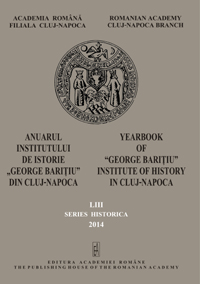Efectele socio-economice ale mineritului în „patrulaterul aurifer” al Apusenilor în perioada 1850-1914
Socio-economic imapcts of mining in the “Golden Quadrilateral” of the Apuseni Mountains during 1850-1914
Author(s): Marin Iosif BalogSubject(s): History
Published by: Editura Academiei Române
Keywords: Transylvania; gold mining; social change; modernization
Summary/Abstract: This study aims to analyse the socio-economic effects of gold mining in Transylvania in the period 1850-1910. Starting from historical and statistical sources, the author sets the area in which gold mining focused on that time. Based on the maps made by the experts, the author highlights a number of 33 localities. There are also presented regional demographic trends and developments in the comparative perspective of the Transylvania. The author also claims that between economic growth and demographic area there was an obvious connection. On social structures, both census data of 1857 and those of 1910 outlines a specific profile of the region. What can be noticed is that the most visible changes in the gold mining and social structure occurred at the end of the 19th century. The foreign capital has made large investments and introduced new technologies that have changed the labour productivity. As a result, the communities that had benefited from these investments, recognized higher rates of development. Where mining has evolved in the old traditional frames with outdated methods and techniques in the form of small peasant mining, communities remained at a low level of modernization.
Journal: Anuarul Institutului de Istorie »George Bariţiu« - Series HISTORICA
- Issue Year: LIII/2014
- Issue No: 53
- Page Range: 147-165
- Page Count: 19
- Language: Romanian

